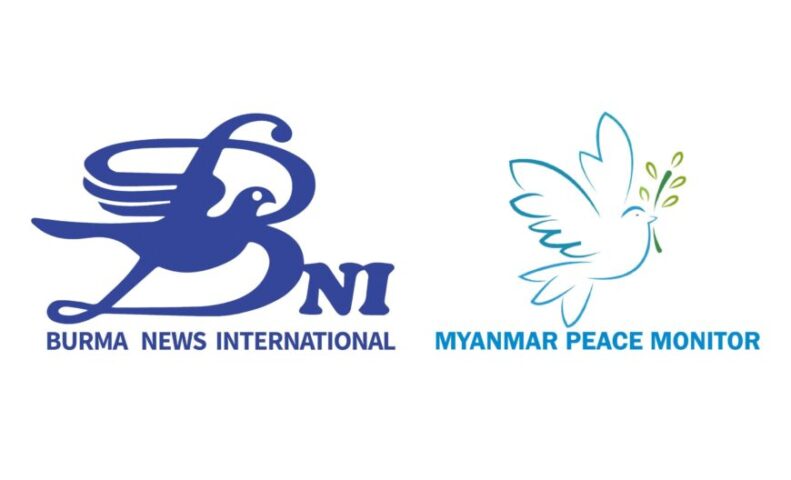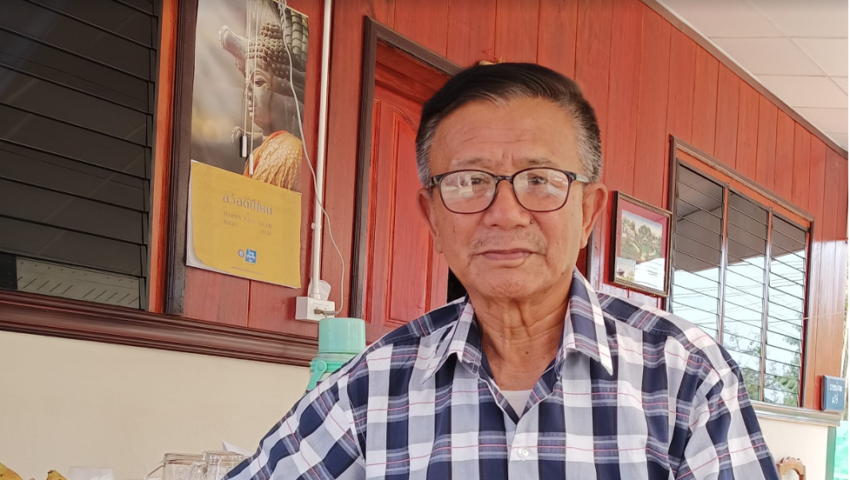An interview with federal affairs specialist and veteran politician Khun Mako Ban
July 18th, 2022
Myanmar would have been a proud nation in the world community for the last 70 years if the constitution drafted by General Aung San had been maintained, said Khun Mako Ban, a veteran politician and federal affairs specialist. After General Aung San’s death, successive governments have been reluctant to implement the commitments of the 1947 Panglong Agreement, signed by General Aung San himself. Under the pretext of “secession”, military leaders have arbitrarily used and disregarded the Panglong Agreement.
Khun Mako Ban, a veteran politician and specialist in federal affairs was interviewed on the following questions: What is the characteristic, essence and objectives of the Panglong Agreement? Why are they still calling for the implementation of the agreement’s commitments? What did General Aung San and the ethnic leaders do for the agreement?
Q: What did General Aung San and the ethnic leaders do to achieve the Panglong Agreement? Where did it start?
A: General Aung San and the Shan, Kachi and Chin ethnic leaders signed the Panglong Agreement during the struggle for independence. We need to know well about the Panglong Agreement. Before General Aung San joined the agreement, the Shan, Kachin and Chin leaders had agreed on five points. Now let’s talk about the other participants like General Aung San, the Anti-Fascist People’s Freedom League (AFPFL) government and the British government. What did they have in the Panglong Agreement before it was signed? They had prepared five basic principles.
When General Aung San and the members of the British government arrived, they began to negotiate on the five principles one by one from February 10th.
After agreeing on points 1, 2, 3 and 4, they formulated nine points of the agreement to be signed on February 12th . The five points formulated by the Shan, Kachin, and Chin leaders are the basic principles of the agreement. The nine points were based on these five principles.
Q: How do you interpret the meaning of the 1947 Panglong Agreement?
A: Some people do not understand how General Aung San and the ethnic leaders managed to sign the Panglong Agreement. Most Bamar people say that they were taken advantage of. But that’s not the symbol of the Panglong Agreement. The agreement has two features. The first is that the Panglong Agreement is not about winning or losing. The other is that it is not an agreement that represents ethnic groups. Rather it is an agreement that represents the respective territories. We need to be very cleare about that.
Q: Some people claim that the 1947 Panglong Agreement only included Kachin, Chin and Bamar and have insisted that other ethnic groups were not part of the agreement? Why do they claim that?
A: Well, they say ‘we Karen people were not part of it’. Neither were Rakhine, Mon or Karenni (Kayah). The Karenni had already gained their own independence at that point. And you can look at who signed the agreement. Fourteen Shan ethnic leaders signed the Panglong Agreement. Why not ten?
As I said, the 33 districts of Shan State were federally organized, most of the Kachin hills were under the Kachin Duwas, and the Chin Hills were under their tribal chiefs. Three Chin representatives and six Kachin representatives signed the agreement. But only one Bamar representative, General Aung San, was present to sign it. In mainland Burma, Karen, Mon, and Rakhine in the Anti-Fascist People’s Freedom League and the Communist Party of Burma were already involved in the coalition.
And General Aung San also served as prime minister in the interim government. The interim government was formed under his leadership. Mon Phoe Cho from Mon, U Aung San Win, and Saw Ba U Gyi from Karen in the cabinet. So, who else would have had to sign when the prime minister himself was there? Therefore, it must be clear to everyone that the Panglong Agreement does not stand for an ethnic group, but for specific administrative regions.
Q: What is the second essence of the Panglong Agreement?
A: Another point is that the signing of the Panglong Agreement coincided with independence. It was agreed to establish equality after independence was achieved, which is the second key point. The reason that the agreement required the leaders to achieve independence at the same time was that Shan, Kachin and Chin could have achieved their independence separately. Under the Atlantic Charter, they had the right to do so. However, General Aung San and the ethnic leaders had the foresight to compromise and gain independence together.
Laos, Cambodia and Vietnam did the same. They became independent separately and are now three nations. If we hadn’t signed the Panglong Agreement at that time, Myanmar would have been divided into three, four or five nations. Therefore, we must understand that gaining independence at the same time was one of the key points of the agreement. The leaders agreed to establish a federal union after independence that would guarantee equality. This point was crucial. But young people still don’t understand this point properly.
Q: The Panglong Agreement was signed on February 12th, 1947. After that, what did General Aung San and the ethnic leaders do further to achieve independence?
A: After General Aung San and the ethnic leaders signed the Panglong Agreement on February 12th, the British government was also present on March 18th. The interim AFPFL government, Shan, Kachin, Chin and Karen leaders were present at the signing. Then the Maymyo Special Commission of Inquiry was formed and met from March 18th to April 21st and was supposed to include the ethnic regions. So, all the ethnic leaders were informed of the agreement to achieve independence and then form a federal democratic union, and there was also an agreement among the leaders that they would have the right to secede from the union if they want to. It is a long story to explain. General Aung San did not stop his efforts even after April 30th. He convened a preparatory conference of the AFPFL to determine how the future structure should be planned. It was the first preparation for the drafting of the constitution. At that time, the national parliament had not yet appeared. We Shan representatives also attended the meeting as observers. There were 14 chapters that served as the basic principles for drafting the future constitution. I have described these chapters in my book.
Q: How did the drafting of the future constitution proceed? What did it say?
A: Let me just talk about the chapter 1. It is the most important of all. Chapter 1 says that it must be an independent federal republic of the Union. That was the name. The second point is about the regions that were to be included in the Union. There were four regions – mainland Burma, Shan, Kachin and Chin. And another one was Karenni (Kayah). They would have asked Karenni leaders if they wanted to join.
They agreed to form the Union with the five regions. And there are seven points under Section 2 and 3. They are about geographical location, non-Burmese speaking ethnic groups, history and culture, and economic affairs. It clearly states that the Union must allow each member to exist as a separate state of the Union if it so desires.
Most people aren’t aware of this. It is about a particular region and a particular people. It’s to be non-Burmese speaking groups. The Panglong Agreement says the Mon, Karen, and Rakhine who live together in mainland Burma must be granted statehood. Of the 14 chapters of the AFPFL preparatory conference, this is found in Section 3 of Chapter 1. The Karen, Mon and Rakhine don’t know this either. I wrote it in my book.
Q – When drafting the future constitution, were there elements for national equality that the ethnic groups wanted?
A: Then comes the national equality. That’s why there were five regions, namely Shan, Kachin, Chin, Karenni, Mon, Rakhine, Karen and Bamar. According to the Panglong spirit, Burma is also a state. That’s why it is called the ‘Eight Principles of Shan State’. We must know about this. This is what General Aung San did for the future federal government and the last thing he did was to hold the elections.
After the preliminary meeting was held on May 14th, he gained even more popularity. From June 16th, 1947, General Aung San continued his unremitting efforts. He convened the national parliament and established the four basic principles: it must be an independent nation, it must have the right to self-determination, it must be the democratic republic, and it must be a Union.
It must not be a protectorate like Canada or Australia, but it must be an independent nation. Until now, I’ve seen that Australia and Canada still hold on to the Queen’s flags and their national anthems, even in their banknotes. General Aung San did not want such a protectorate status.
Q: The third point in what was just said is that it must be a democratic republic. Can you explain that in simpler terms?
A: What does the third point say? It’s to be a democratic republic. It’s short, but complete. It’s democracy based on each individual citizen. There must be a Pyithu Hluttaw (House of Representatives) and an Amyotha Hluttaw (House of Nationalities), which are separate. The Amyotha Hluttaw will elect the President. This is how the system works. It gives equal power to the two parliaments. This prevents the people of mainland Burma from dominating the legislature just because their population is larger.
If there are 500 seats in the Pyithu Hluttaw, the Bamar get 300. If the population is 30 million, the ethnic nationalities get only 200 seats. There are already more Bamar people. Chances are that more prime ministers and ministers will come from Bamar population. Bamar people will dominate in the administration. If there are 10 seats in one state, then there will be 100 seats in 10 states. Then the seats for ethnic nationalities will also be 50, 60, 70 or 80. When the Amyotha Hluttaw passes a law, it is passed on to the Pyithu Hluttaw. If the Pyithu Hluttaw doesn’t like it, it will be rejected.
It’s then not passed. It is very important that both bodies agree so that it becomes a law. Most people don’t understand what ethnic equality means. Also, in terms of the prime ministers and the seats in the Pyithu Hluttaw, there cannot be equality because the Bamar are in the majority. In a system with a prime minister, the ethnic nationalities have the right to reject the law passed by the Pyithu Hluttaw. This is where equality lies. People are obsessed with the 7 States and 7 Regions created by Ne Win. “The country would fall apart if federalism were applied.” That’s exactly what Ne Win said. People have been obsessed with this idea.
Equality exists only in the Amyotha Hluttaw. General Aung San had already made sure of that. Myanmar would have been a proud nation in the world community for the last 70 years if the constitution drafted by General Aung San had been maintained.
Sent by NMG

